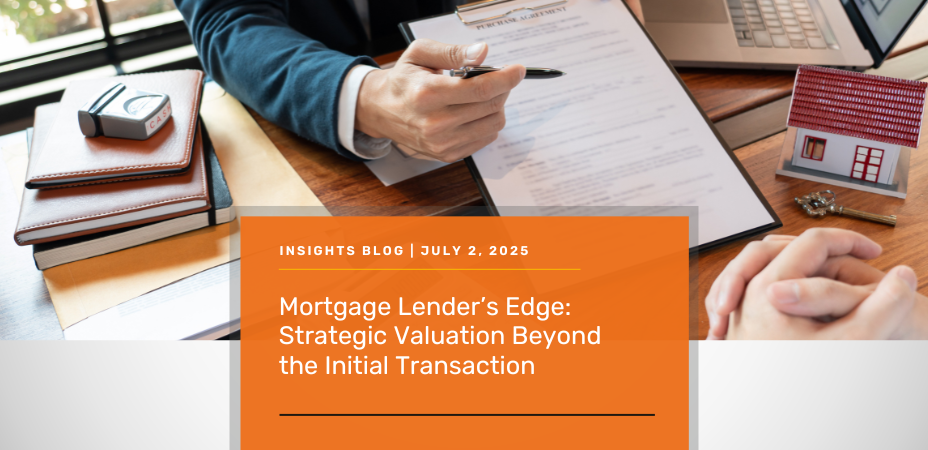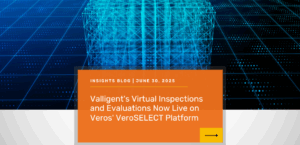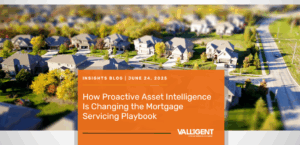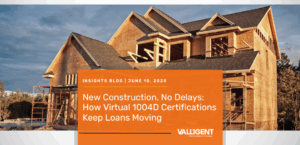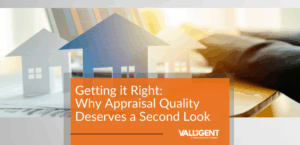Are you confident your current real estate valuation strategies are safeguarding your loan portfolio against the next market shift? In an unpredictable lending environment, relying solely on a single property valuation at origination may not be sufficient to protect investments or drive consistent returns. Forward-thinking lenders are shifting to a more strategic mindset, one that incorporates accurate and cost-effective property insights across every stage of the loan lifecycle. It’s no longer just about closing deals—it’s about strengthening portfolios, making informed decisions, and building a resilient foundation for the long term.
Why a One-and-Done Valuation Falls Short
Traditional appraisals remain essential for many lending scenarios. However, in today’s market—where interest rate fluctuations and increasing insurance premiums impact borrower affordability—a static property valuation quickly loses relevance.
Lenders are recognizing the importance of maintaining up-to-date insight into asset values throughout the loan lifecycle. As the industry continues to focus on valuation quality and integrity, ongoing property intelligence plays a critical role in risk mitigation. Fortunately, modern innovations make this process efficient and scalable.
Why Strategic Valuation Pays Off
Lenders who take a broader, long-term approach to property valuation are seeing measurable benefits in risk management, investment strategy, and operational efficiency.
- Improved Portfolio Oversight: Access to timely property data helps lenders monitor value changes across their portfolios. Instead of reacting to problems, they can identify trends early, such as regional risk concentrations related to climate exposure or declining market conditions. Modern valuation data supports more accurate collateral assessments and smarter capital allocation. As more institutions rely on automated decision-making, current property insights are essential for real-time risk detection and scenario planning [1].
- Stronger Investment Intelligence: For lenders evaluating loan pools, exploring real estate owned opportunities, or advising on investment strategies, current and detailed valuation data reveals opportunities and minimizes missteps. This is especially important in emerging segments such as sustainable housing or mixed-use developments, where understanding true value requires a nuanced approach [2].
- Stronger Planning and Risk Mitigation: A clearer understanding of current and future property values supports stronger policy setting, capital planning, and risk mitigation. Lenders who integrate valuation insights into broader forecasting efforts are better prepared for market changes and more equipped to scale sustainably. Tools like iVALUATION and VeroFORECAST can provide very valuable and timely up-to-date market insights.
Tech-Enabled Tools Make Strategic Valuation Easier and Scalable
Recent advances in property valuation technology allow lenders to improve accuracy and speed without exceeding budget or timeline constraints.
- Automated Valuation Models (AVMs) like VeroVALUE AVM are being used more frequently for their speed and reliability, particularly in home equity, refinancing, and servicing contexts. In 2024, AVMs and property condition reports were used in 34 percent of home equity loans by one major provider’s clients, up from 25 percent in 2023 [3].
- Virtual property valuations are also rapidly expanding for residential properties. Enabled by secure live video with a qualified real estate professional and geo-location technology, on-demand virtual inspections offer considerable advantages in speed, cost reduction, and borrower convenience [4, 5]. By reducing the need for physical visits, financial institutions can significantly cut expenses and turnaround time [6].
Valligent has been a pioneer in virtual valuation since 2003. Its full suite of virtual property valuation services blends seasoned real estate valuation expertise with cutting-edge technology to provide solutions such as:
• Virtual Property Inspections (ValINSPECT)
• Evaluations (eVAL)
• Bifurcated/desktop appraisals (ValPRAZE)
• Virtual 1004D completion certificates
These tools allow lenders to select the best-fit solution for each residential lending scenario while maintaining compliance and accuracy.
Valligent also offers data collection services that meet government-sponsored enterprise requirements and support appraisal waivers, desktop appraisals, and hybrid models. With built-in quality controls like BiasCHECK and an optional ValPROTECT warranty add-on, lenders gain added assurance in valuation reliability.
A Strategic Priority for 2025 and Beyond
In 2025, turning property valuation into a continuous strategic function is essential for lenders who want to lead. Those who expand their valuation approach will gain better insight into risk, identify growth potential, and respond faster to change across the full loan lifecycle.
Ready to move beyond one-time valuations? Connect with Valligent to explore smart, scalable solutions for your lending strategy.
Citations:
[1] “Lending Trends in 2025: What’s Changing and How to Stay Ahead – Neofin Blog.” Neofin Blog, April 9, 2025.
[2] “2025 Real Estate Investing Outlook: Navigating a Shifting Market – Longleaf Lending.” Longleaf Lending, May 14, 2025.
[3] “Corporate Settlement Solutions Releases 2024 Home Equity Valuation Analysis Showing a Continued Increase in the Use of AVMs Among Home Equity Lenders.” Corporate Settlement Solutions, February 19, 2025.
[4] “Home Equity Lending: Beyond Appraisals, Navigating Change – Valligent.” Valligent, February 7, 2025.
[5] “Virtual Property Assessments: A Cost-Effective Solution for Banks – TrendSource.” TrendSource, April 17, 2025.
[6] “Remote Property Valuations: Cutting Costs for Financial Institutions – TrendSource.” TrendSource, April 3, 2025.
